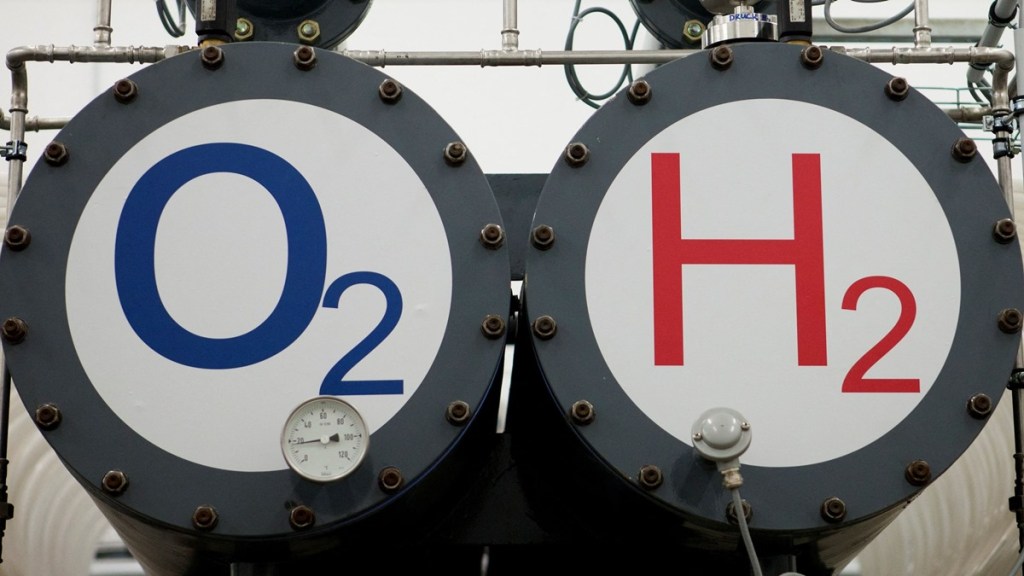By Nolty Theriot and Rashi Seth
Hydrogen stands as a linchpin in achieving global net-zero emissions by 2050. Apropos of the upcoming COP 28, Prime Minister Narendra Modi at the 26th session of the United Nations Framework Convention on Climate Change (COP 26) in November 2021, announced India’s target to achieve net zero by 2070.
India’s ambitious plans to produce 5million metrictons (MMT) of hydrogen by 2030, allocating $2.36 billion (Rs. 197.4 billion), align with the National Green Hydrogen Mission. The mission espouses decarbonization and self-reliance. The quest for dominance in electrolyzer manufacturing is pivotal for fostering India’s green hydrogen ecosystem and moving towards a clean energy economy. The recently introduced Production Linked Incentives (PLI) under the SIGHT program serve as a catalyst, leveraging India’s cost advantages over China in labor and cost structures. This positions India as a potential global hub for electrolyzer manufacturing, echoing China’s dominance in solar equipment manufacturing, where 85% of global solar cells originated in China in 2021.
India’s cost-effective structure, coupled with the prevalent China plus one sentiment, sets the stage for its emergence as a global electrolyzer manufacturing hub. India, as the world’s largest democracy and now the most populous nation, shares a democratic ethos with the United States, European Union, and Australia. New Delhi is well-positioned for global leadership in green hydrogen production and export. Collaborative efforts through the U.S-India Hydrogen Task Force could bolster hydrogen technologies, driving down production costs and expanding its utility in the energy portfolio.
Initiatives like the New and Emerging Renewable Energy Technologies Action Platform (RETAP) under the U.S.-India Strategic Clean Energy Partnership (SCEP) facilitate collaboration with leading research and development (R&D) institutions across both the U.S. and India. RETAP aims to accelerate key hydrogen technologies, potentially establishing India as an R&D hub for electrolyzer manufacturing. To strengthen its strategic presence in global value chains, India must further fortify its initiatives beyond current policies like the National Green Hydrogen Mission and PLI under the SIGHT program.
Critical minerals are pivotal for electrolyzer manufacturing, yet India entirely relies on imports, while China dominates with a global monopoly. Though exploration projects are underway in four states, namely Madhya Pradesh, Arunachal Pradesh, Himachal Pradesh, and Kerala, ensuring a sufficient supply is imperative for manufacturing enough electrolyzer to produce 5MT hydrogen by 2030. Joint exploration ventures with the U.S. offer a strategic solution to secure critical minerals, crucial for electrolyzer manufacturing and achieving ambitious hydrogen goals.
The recently held Mineral Security Partnership Principals’ Meeting in London, aimed at building secure and responsible global critical mineral supply chains, was highlighted in the Joint Statement on the Fifth Annual U.S.-India 2+2 Ministerial Dialogue that recently took place in New Delhi. The dialogue, a significant stride, underpins the mutual commitment to developing secure and responsible critical mineral supply chains. Additionally, American support for the International Energy Agency (IEA) and its efforts toward facilitating India’s IEA membership strongly align with fostering secure energy transitions globally. This recognition within the bilateral dialogue emphasizes the shared determination of both nations to address critical mineral scarcity and bolster sustainable energy initiatives on a global scale.
The scalability of hydrogen-powered applications across various sectors like industry, transport, and power generation offers transformative potential for the burgeoning Indian economy. The versatility of hydrogen enables its use in various applications, from fueling vehicles to providing clean energy in industrial processes and power generation. This scalability, paired with India’s intent to become a global leader in electrolyzer manufacturing, presents an unparalleled opportunity for economic growth and technological innovation.
India’s attractiveness for tech and overseas investments in this sector will be pivotal. More than $10 trillion of new investments will be needed to reachIndia’sgoal of net zero by 2070. Attracting increased Foreign Direct Investment (FDI) in this sector will require greater capacity building, enhanced investor confidence, and improved systemic efficiencies. As technological and geopolitical developments affect global energy markets, India’s transparent and nimble policy and regulatory responses, coordinated with stakeholders from the public, industry, and the Central and State governments, will be crucial. These measures will position India as a significant player in the rapidly increasing global hydrogen economy.
In conclusion, India’s pursuit of electrolyzer manufacturing dominance and hydrogen production signifies a transformative potential in the global energy landscape. Collaborative efforts with the U.S. not only bolster domestic initiatives but also position India as a key player in global hydrogen markets. By fortifying policies, leveraging technological collaborations, and addressing critical mineral scarcity, India could emerge as a frontrunner in the clean energy revolution, contributing significantly to a sustainable future for its billion-plus population.
About the Authors
Nolty Theriot – Senior Vice President of Government Affairs, Head of Energy & Infrastructure at the US – India Strategic Partnership Forum (USISPF)
Rashi Seth – Associate, Energy, Sustainability, and Infrastructure at the US – India Strategic Partnership Forum (USISPF)
Disclaimer: Views expressed are personal and do not reflect the official position or policy of Financial Express Online. Reproducing this content without permission is prohibited.
